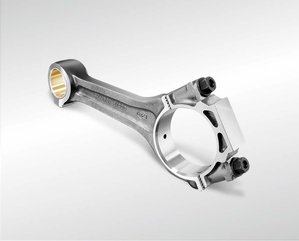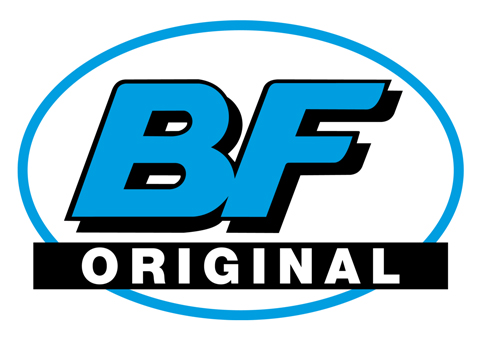Connecting rod
The connecting rod converts the linear up and down movement of the piston into the circular motion of the crankshaft and is therefore subject to tension, compression, bending and buckling.
Function
The connecting rod creates the link between the piston and crankshaft and thus transmits power. It converts the linear up  and down movement of the piston into the circular motion of the crankshaft and is therefore subject to tension, compression, bending and buckling.
and down movement of the piston into the circular motion of the crankshaft and is therefore subject to tension, compression, bending and buckling.
The connecting rod is mounted on the crank pin of the crankshaft with a plain bearing. The connecting rod bearing cap is bolted to the big end. In most cases the connecting rod is hollow or provided with an internal cast oil duct to supply the gudgeon pin with lubricant.
To obtain minimal weight and high strength, connecting rods are made of the following materials:
Mass-produced connecting rods are forged, cast or sintered. Forged connecting rods exhibit a better strength-to-weight ratio and lower costs than sintered connecting rods. Die manufacture is however comparatively expensive.
- Microalloyed steels
- Sintered metals
- High-grade aluminium
- CFRP and titanium (for high-performance engines)
Value retention
Connecting rods only have to be replaced in the event of complete failure. In other words:
- If they are bent or even broken
- If the toothed belt is torn or the timing chain broken
- In the event of major piston damage and knocking combustion
- If the bearing mount is defective




